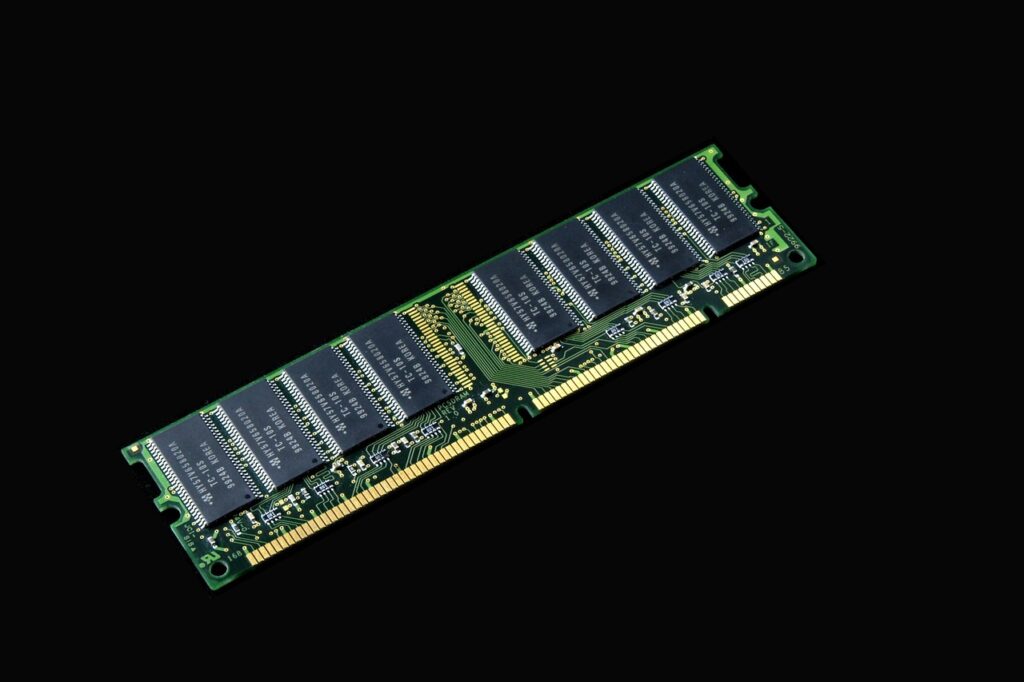RAM Types & Installation: The Ultimate PC Memory Upgrade Guide

therefore If you’re planning a PC memory upgrade or simply want to boost your computer’s speed, knowing about the different types of memory and how to install new modules is crucial. Then the right memory doesn’t just improve speed—it can extend your system’s lifespan. In this ultimate guide, finally we’ll help you choose the best RAM for your PC and show you how to install it step by step.
Your ad will appear here once approved.
✅ What is RAM, and Why Does It Matter?
Alt text: Close-up photo of a DDR4 RAM module used in PC memory upgrades.
Before we dive into technical details, let’s clarify what memory does. RAM (Random Access Memory) is your computer’s short-term storage. in addition temporarily holds data your system needs to run programs, open files, and manage tasks efficiently.
finally you understand that more memory means smoother multitasking and better performance for demanding tasks like gaming, video editing, or working with large datasets.
→ Check out our guide on choosing PC hardware for beginners.
🧩Exploring Different Types of RAM
Although people often call it simply “RAM,” there are several memory types with unique benefits. Let’s take a closer look:
1. DRAM (Dynamic Memory)
- Widely used in modern systems.
- However, it requires constant refreshing to hold data, slightly impacting performance.
2. SRAM (Static Memory)
- Much faster than DRAM and used primarily in CPU caches.
- Nevertheless, it’s expensive and unsuitable for your system’s main memory.
3. SDRAM (Synchronous DRAM)
- Operates in sync with your system clock, providing better speed.
- In addition, it was common in older desktops but has largely been replaced by newer technologies.
4. DDR Memory (Double Data Rate)
- Transfers data on both rising and falling edges of the clock signal, effectively doubling speed.
- Furthermore, it’s evolved through several generations:
- DDR1 – Now obsolete.
- DDR2 – Faster and uses less power than DDR1.
- DDR3 – Still found in older computers.
- DDR4 – Today’s standard, offering excellent speed and efficiency.
- DDR5 – The latest, delivering even higher speeds and efficiency, perfect for high-end gaming or professional workstations.
If you’re weighing DDR4 vs DDR5, consider your budget and motherboard compatibility. DDR5 provides higher bandwidth and future-proofing, while DDR4 remains affordable and reliable.
5. SO-DIMM Modules
Alt text: Two SO-DIMM RAM modules suitable for laptop RAM upgrades.
- Smaller modules used in laptops and compact computers.
- Perfect for a laptop memory upgrade, especially when space is tight.
🗂️ DDR4 vs DDR5 Memory: Comparison Table
If you’re considering a memory upgrade, here’s a quick look at how DDR4 compares to DDR5:
| Feature | DDR4 | DDR5 |
|---|---|---|
| Data Transfer Rate | 1600–3200 MT/s | 4800–8400 MT/s (and rising) |
| Voltage | 1.2V | 1.1V |
| Burst Length | 8 | 16 |
| Efficiency | Good | Excellent |
| Cost | More affordable | Higher (but dropping) |
| Best For | Budget builds, solid performance | High-end gaming, future-proof systems |
Note: MT/s = Mega Transfers per second.
→ Explore Crucial’s Memory Advisor Tool to find compatible RAM for your system.
🔧 How to Install RAM in Your PC
Fortunately, learning how to install new memory isn’t as intimidating as it might sound. It’s one of the easiest—and most effective—upgrades you can perform.
✅ Step-by-Step Installation
Follow these simple steps for a smooth upgrade:
- Power Off and Unplug
- Shut down your system completely and unplug it from the wall. This step is essential for safety and protecting your components.
- Open the Case
- Remove the side panel of your desktop. For laptops, locate the memory compartment on the underside or under the keyboard.
- Locate the Memory Slots
- Look for long, narrow slots labeled DIMM1, DIMM2, etc., on your motherboard.
- Remove Existing Modules (if upgrading)
- Push the clips at either end of the slot outward. The module will lift slightly for easy removal.
- Align the New Module
- Importantly, check the notch on the memory stick. It only fits one way. Align it carefully to avoid damage.
- Press Firmly into Place
- Apply firm but gentle pressure until the side clips snap back into place, securing the module.
- Reassemble and Boot Up
- Replace the panel, plug the system back in, and power it on. Check your BIOS or operating system to confirm the new memory is recognized.
Alt text: Hand installing a DDR4 RAM stick into a desktop PC motherboard slot.
💡Essential RAM Upgrade Tips for Your PC
furthermore here are some helpful tips to keep your upgrade stress-free:
1 Check your motherboard’s manual to see which memory types and capacities it supports.
2 Avoid mixing modules of different speeds or brands for better stability.
3 Handle memory sticks carefully by the edges to prevent static damage.
4 Compare DDR4 vs DDR5 features to find the best option for your build.
5 For laptops, confirm your model’s specifications before purchasing new memory.
→ Learn more about RAM types and specs from Kingston’s official guide.
🎯 Benefits of Upgrading Your Memory
A memory upgrade does far more than add capacity—it transforms how your system performs:
- Faster multitasking and responsiveness.
- Smoother gaming experiences.
- Better performance for tasks like video editing and graphic design.
- Extends your PC’s usable life and saves money on replacement costs.
📝 Conclusion: Choose the Right Memory for Your PC
In conclusion, understanding memory types and learning how to install new modules can significantly improve your computer’s performance.
Whether you’re aiming for the best memory for gaming PCs or planning a simple laptop upgrade, the right choice makes all the difference.
Don’t let sluggish performance hold you back. Explore your upgrade options and enjoy a faster, smoother computing experience!
Have questions about selecting or installing memory? Drop a comment below, or contact us here for personalized help!